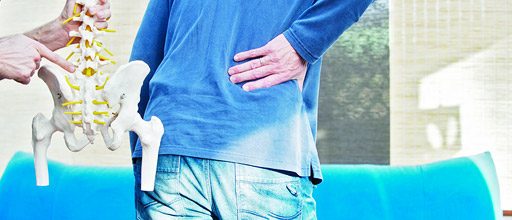
Even brief exposure to heavy loads can cause back strain and sprain
In a first-of-its-kind study of immediate back pain triggers and ranking the causes of back pain by degree of risk, a new research done by the George Institute for Global Health suggests that brief exposure to heavy loads, awkward postures or being distracted can trigger an episode of back pain.
The study also found that sudden attacks of back pain are more likely to begin in the morning than later in the day. Back pain is also more likely to be triggered when fatigued or tired or when distracted while performing a manual task.
“The results of this study are unique, demonstrating for the first time that even brief exposure to a range of physical and psychosocial factors can considerably increase the risk of back pain,’’ says study leader Associate Professor Manuela Ferreira, of the George Institute for Global Health and Sydney Medical School, The University of Sydney.
Each day back pain affects approximately 25% of the world’s population, and is one of the 10 leading causes of disease burden globally. Back pain is, however, unique amongst this list of 10 diseases because there has been little or no progress in identifying effective prevention strategies. In India, back pain affects between 6 and 35% of people in urban centres and 4-20% in rural settings.
Professor Ferreira said that around 40% of sprains and strains in the study occurred from 8-11am. “We’re not sure why people are more likely to trigger an episode of back pain in the morning. Spinal discs swell with fluid overnight, potentially leaving them more susceptible to stresses when loaded.”
“Most of us will have back pain at some point. This study shows that it’s not just long-term stresses on the back that lead to back pain,” she added.
“Just as importantly, this study shows there are several things we can do to prevent back pain – it’s not just something we’re prone to because we have been lifting heavy loads or inactive for a long time.
“The key message is that people should be careful when lifting: even brief exposure to heavy loads, awkward postures or being distracted can trigger an episode of back pain.”
George Institute Musculoskeletal research leader Professor Chris Maher, a senior author on the paper, said previous back pain risk studies have only examined long-term exposure to factors such as smoking and inactivity. Investigations on short-term exposure to transient risk factors occurring immediately before back pain were lacking.
Additionally, no research had ever evaluated whether distraction or fatigue, identified as important factors for other musculoskeletal conditions, trigger back pain.
“Our results have identified factors that trigger back pain and, importantly, which ones are more dangerous. For example being fatigued triples the odds of developing immediate back pain, whereas distraction increases the odds by a factor of 25,” Professor Maher said.
Back pain triggers included (ranked from most risky down):
1. Distraction during a task
2. Manual tasks involving awkward postures
3. Manual tasks involving objects not close to the body
4. Manual tasks involving people or animals
5. Manual tasks involving unstable or unbalanced objects
6. Manual tasks involving heavy loads
7. Moderate or vigorous physical activity
8. Fatigue/tiredness
The study also busted popular myths: activities that were not found to trigger back pain included:
1. Alcohol consumption
2. Sexual activity
Professor Maher said these results add to our understanding of how to prevent back pain.
“There are really three things people can do to reduce their risk of back pain. Firstly use your back wisely and we have shown here that even brief exposures can be harmful. Secondly adopt a healthy lifestyle: smoking, being overweight, prolonged sitting and/or and being physically inactive are bad for back health. And lastly stress, either at home or work, seems to increase your chances of getting back pain.
The study looked at 999 patients aged 18 years or older in New South Wales in Australia and was published in Arthritis Care & Research.

